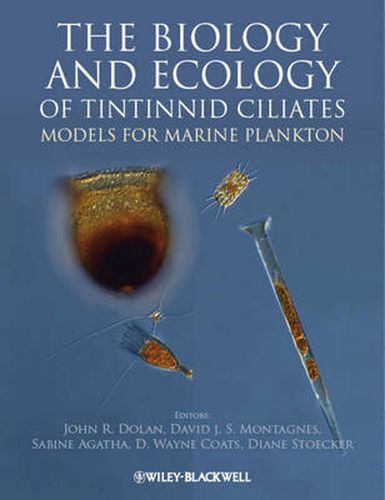Readings Newsletter
Become a Readings Member to make your shopping experience even easier.
Sign in or sign up for free!
You’re not far away from qualifying for FREE standard shipping within Australia
You’ve qualified for FREE standard shipping within Australia
The cart is loading…






Planktonic protists both produce and consume most of the primary production in the world ocean. They not only play key roles in the oceans but also represent an astounding amount of diversity: ecological morphological and genetic. However, for most taxa their ecology, morphology, phylogeny and biogeography are either poorly known or appear to be largely unrelated to one another; this hinders our understanding of their biology as well as interpretation of emerging genetic data. Tintinnid ciliates represent a singular exception. Compared to nearly all other groups of planktonic protists, there is a very substantial and relatively detailed literature (both modern and historical) on tintinnids. This volume synthesizes knowledge concerning a wide variety of topics ranging from anatomy and systematics, physiology, behavior, ecology (including ecological roles, predators, parasites, biogeography, and cysts) to fossil history. It will appeal to an audience ranging from advanced undergraduates to researchers in the fields of Oceanography, Marine Biology and Microbial Ecology.
$9.00 standard shipping within Australia
FREE standard shipping within Australia for orders over $100.00
Express & International shipping calculated at checkout
Planktonic protists both produce and consume most of the primary production in the world ocean. They not only play key roles in the oceans but also represent an astounding amount of diversity: ecological morphological and genetic. However, for most taxa their ecology, morphology, phylogeny and biogeography are either poorly known or appear to be largely unrelated to one another; this hinders our understanding of their biology as well as interpretation of emerging genetic data. Tintinnid ciliates represent a singular exception. Compared to nearly all other groups of planktonic protists, there is a very substantial and relatively detailed literature (both modern and historical) on tintinnids. This volume synthesizes knowledge concerning a wide variety of topics ranging from anatomy and systematics, physiology, behavior, ecology (including ecological roles, predators, parasites, biogeography, and cysts) to fossil history. It will appeal to an audience ranging from advanced undergraduates to researchers in the fields of Oceanography, Marine Biology and Microbial Ecology.